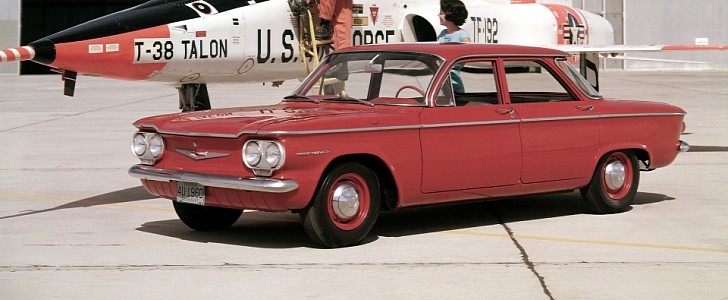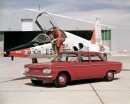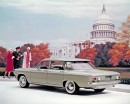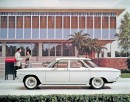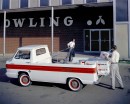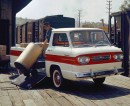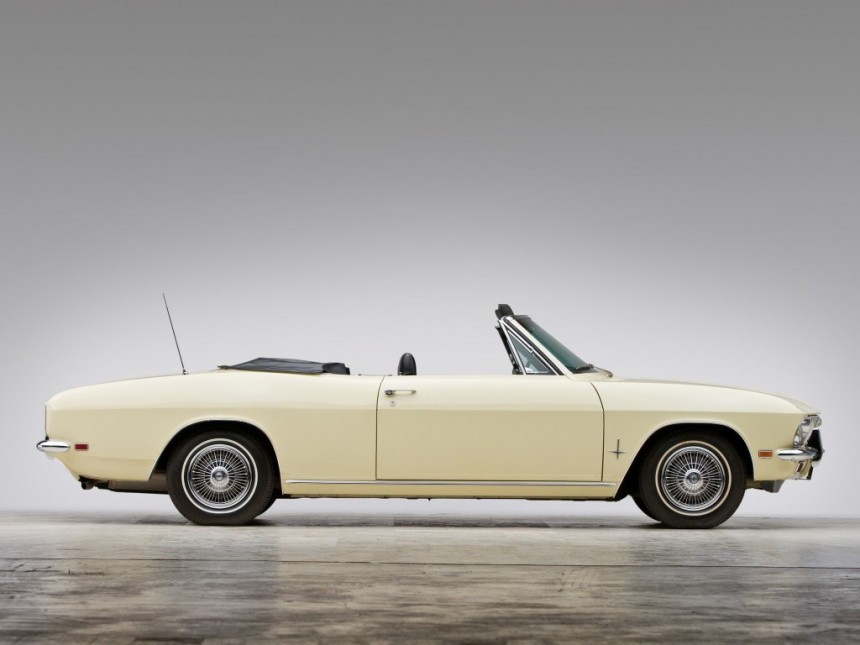There are many “what were they thinking moments” in the automotive industry, the most recent of which include the Dieselgate scandal and Takata debacle. The Ford-Firestone controversy also springs to mind, along with the substandard rear suspension bolts and defective engine mounts that required GM to recall 6.4 and 6.7 million vehicles.
Many people add the Corvair to this list because of its unconventional design that's prone to oversteering. We also have to mention consumer protection activist Ralph Nader, the gentleman behind Unsafe at Any Speed, the best-selling book that single-handedly killed the pioneering economy car.
This is a short history of the Corvair, an icon with an undeserved bad rep.
America was hungry for all things new after World War II, including new automobiles. General Motors design chief Harley Earl and Frank Hershey gave us the fabulous-looking tailfins, Virgil Exner masterminded the Forward Look styling language for the Chrysler group, and the Dearborn-based Blue Oval revealed the slab-sided Ford Shoebox for the 1949 model year.
The 1950s were a period of experimentation for all three of the Big Three. United Auto Workers official Dave Mann leaked the Corvair 18 months early, telling the media that GM would manufacture a small car in Ypsilanti. Introduced in 1959 as a 1960 model, the newcomer is one of the first American compacts ever produced. The term “compact” was coined by American Motors chairman George Romney, the old man of Mitt Romney.
As opposed to segment rivals that include the Plymouth Valiant and the Ford Falcon on which the first-generation Mustang is based, the Corvair features a six-cylinder engine located in the rear. The air-cooled powerplant is complemented by independent suspension on every corner, a rather interesting setup for that era when compared to other American cars.
Designated Car of the Year for 1960 by Motor Trend magazine, the Corvair used an existing manual transmission. That’s why the engine rotation had to be reversed. When you think about it, one forward gear and many reverse gears wouldn’t have been to anyone’s liking. The unibody construction with welded front fenders was a first for General Motors and Fisher Body as well, and similar to the Volkswagen Beetle, a swing axle was utilized out back.
Two series of the Corvair were offered in the first year of production, the base 500 priced at $1,984 (or $18,650 after we adjust for inflation) and the plushier 700. Dealers weren’t exactly amused by the pricing because the automatic transmission, heater, and radio would ramp up the price to approximately $2,500. That’s full-size Chevrolet Biscayne territory, but nevertheless, the Corvair sold around 1.8 million units through 1969.
The secret to this volume comes in the guise of body styles that include the Lakewood station wagon, Greenbrier passenger van, Corvan panel van, and Rampside pickup. Two-door coupes and convertibles were offered as well.
The sportiest version of them all was the Yenko Stinger, which belted out anything between 160 and 240 ponies. Although the sporty Monza helped sales too, the simpler Falcon handily outsold the Corvair every single year.
As the second generation was coming out with a trailing-arm rear suspension inspired by the Corvette Sting Ray, so was Ralph Nader’s critically acclaimed book. The first chapter of Unsafe at Any Speed is dedicated to the first-generation Corvair with the rear swing axle. Nader described the Falcon’s rival as a one-car accident over the somewhat hairy handling that's exacerbated by the inability to bear heavy loads. Oversteer caused by the absence of an anti-roll bar also needs to be mentioned, along with factory-recommended tire pressures of 15 psi up front and 26 psi for the rear tires.
As they often do, tire pressure warnings went unheeded. Chevrolet rectified these issues with the second-generation Corvair, but the damage was already done. The original Mustang can be considered the final nail in the coffin of the Corvair for stealing many customers from the Golden Bowtie.
Nader had a valid point, but few people are aware that the author of Unsafe at Any Speed also had an agenda against fun cars that are driven fast because they’re fun. The aftermarket stepped in to rectify the Corvair’s problems, and a common solution to the oversteer-y character of the car involves brackets that reduce the pressure placed on the front of the car.
Come 1971, the Department of Transportation tested a 1963 Corvair and a second-gen model against four contemporary automobiles. Better late than never, the wrong has been righted by an independent review panel, as follows: “the handling and stability performance of the 1960 - 1963 Corvair does not result in an abnormal potential for loss of control or rollover.”
This is a short history of the Corvair, an icon with an undeserved bad rep.
America was hungry for all things new after World War II, including new automobiles. General Motors design chief Harley Earl and Frank Hershey gave us the fabulous-looking tailfins, Virgil Exner masterminded the Forward Look styling language for the Chrysler group, and the Dearborn-based Blue Oval revealed the slab-sided Ford Shoebox for the 1949 model year.
The 1950s were a period of experimentation for all three of the Big Three. United Auto Workers official Dave Mann leaked the Corvair 18 months early, telling the media that GM would manufacture a small car in Ypsilanti. Introduced in 1959 as a 1960 model, the newcomer is one of the first American compacts ever produced. The term “compact” was coined by American Motors chairman George Romney, the old man of Mitt Romney.
As opposed to segment rivals that include the Plymouth Valiant and the Ford Falcon on which the first-generation Mustang is based, the Corvair features a six-cylinder engine located in the rear. The air-cooled powerplant is complemented by independent suspension on every corner, a rather interesting setup for that era when compared to other American cars.
Designated Car of the Year for 1960 by Motor Trend magazine, the Corvair used an existing manual transmission. That’s why the engine rotation had to be reversed. When you think about it, one forward gear and many reverse gears wouldn’t have been to anyone’s liking. The unibody construction with welded front fenders was a first for General Motors and Fisher Body as well, and similar to the Volkswagen Beetle, a swing axle was utilized out back.
The secret to this volume comes in the guise of body styles that include the Lakewood station wagon, Greenbrier passenger van, Corvan panel van, and Rampside pickup. Two-door coupes and convertibles were offered as well.
The sportiest version of them all was the Yenko Stinger, which belted out anything between 160 and 240 ponies. Although the sporty Monza helped sales too, the simpler Falcon handily outsold the Corvair every single year.
As the second generation was coming out with a trailing-arm rear suspension inspired by the Corvette Sting Ray, so was Ralph Nader’s critically acclaimed book. The first chapter of Unsafe at Any Speed is dedicated to the first-generation Corvair with the rear swing axle. Nader described the Falcon’s rival as a one-car accident over the somewhat hairy handling that's exacerbated by the inability to bear heavy loads. Oversteer caused by the absence of an anti-roll bar also needs to be mentioned, along with factory-recommended tire pressures of 15 psi up front and 26 psi for the rear tires.
As they often do, tire pressure warnings went unheeded. Chevrolet rectified these issues with the second-generation Corvair, but the damage was already done. The original Mustang can be considered the final nail in the coffin of the Corvair for stealing many customers from the Golden Bowtie.
Nader had a valid point, but few people are aware that the author of Unsafe at Any Speed also had an agenda against fun cars that are driven fast because they’re fun. The aftermarket stepped in to rectify the Corvair’s problems, and a common solution to the oversteer-y character of the car involves brackets that reduce the pressure placed on the front of the car.
Come 1971, the Department of Transportation tested a 1963 Corvair and a second-gen model against four contemporary automobiles. Better late than never, the wrong has been righted by an independent review panel, as follows: “the handling and stability performance of the 1960 - 1963 Corvair does not result in an abnormal potential for loss of control or rollover.”
